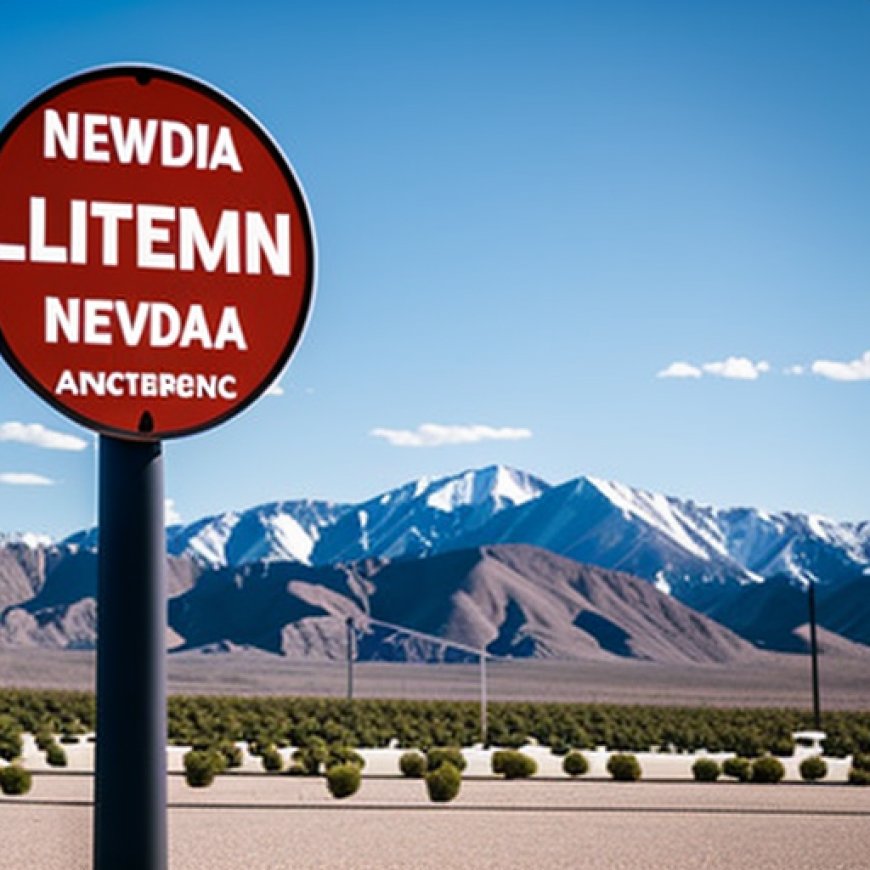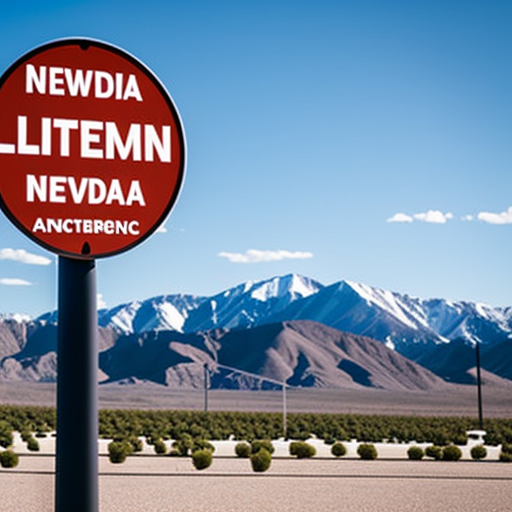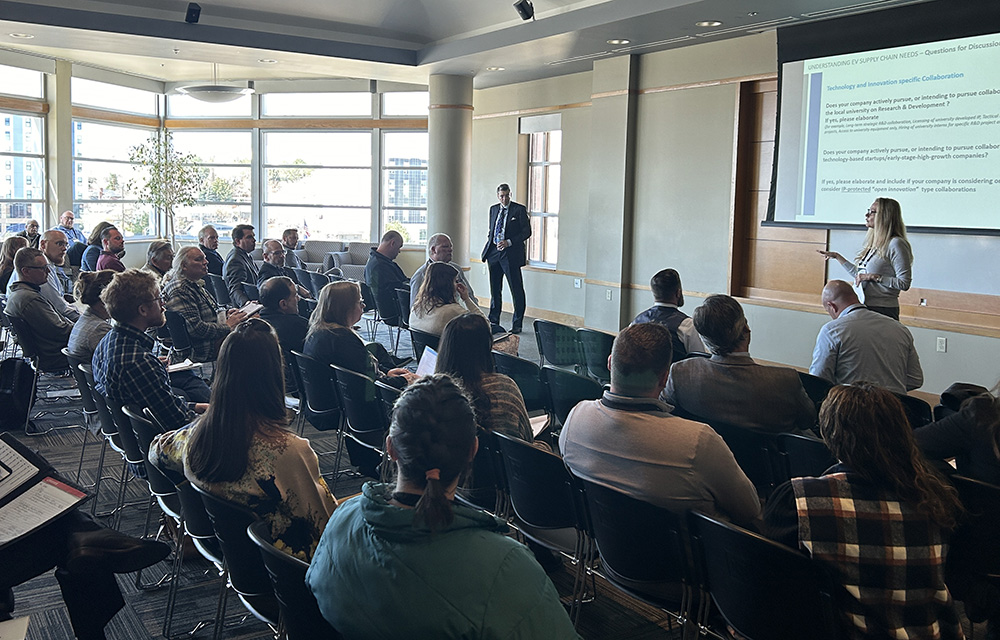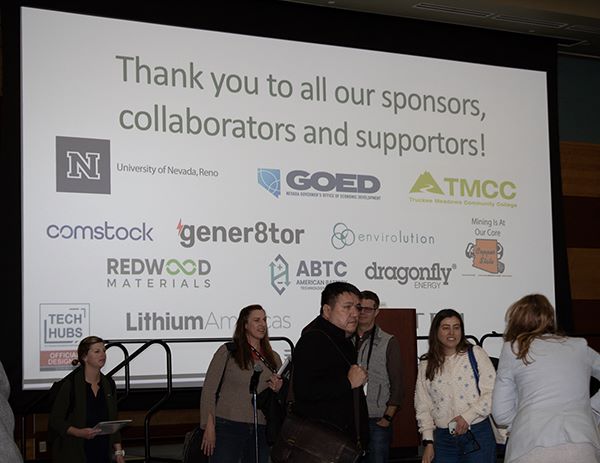Nevada Lithium Circular Economy Conference held at University April 8 and 9 | University of Nevada, Reno
Nevada Lithium Circular Economy Conference held at University April 8 and 9 University of Nevada, Reno


More than 150 organizations collaborate to advance the Lithium Circular Economy in Nevada
Over the course of two days, the Nevada Lithium Circular Economy Conference brought together representatives from more than 150 organizations. The conference, held at the University of Nevada, Reno’s Joe Crowley Student Union, saw the participation of over 300 registrants who aimed to foster collaboration and drive inclusive economic growth in the region.
The conference was made possible by the National Science Foundation Engines Development Type-1 Award (Number 2305697) granted to the University. This award has led to the establishment of a statewide initiative called Recharge Nevada, which serves as a coalition for energy innovation. Recharge Nevada aims to create a resilient future for Nevada by aligning various statewide efforts, initiatives, and funded projects towards a common goal – an innovation economy based on the lifecycle of lithium batteries and critical materials.
Economic Development (Nevada’s Battery Supply Chain: Challenges and Opportunities)

“We are at the onset of our journey with Recharge Nevada, a comprehensive initiative uniting the state’s diverse efforts with those of our regional collaborators, all aimed at fostering a coordinated and cohesive approach to a circular lithium and critical materials economy,” said Mridul Gautam, Vice President for Research and Innovation at the University. “The state is abuzz with activity, spanning use-inspired research, workforce and economic development strategies, private-sector innovations, and educational initiatives. Recharge Nevada serves as a catalyst for advancing sustainable mining practices, reliable domestic energy storage technologies and beyond.”
Conference highlights
Trends in Battery Technology
The conference featured panel discussions on the latest trends in battery technology. Experts in the field shared insights on advancements and innovations in this rapidly evolving industry.
Workforce and Economic Development
Another important topic of discussion was workforce and economic development. Participants explored strategies to develop a skilled workforce and promote economic growth in the context of the lithium circular economy.
Future Needs for a Successful Lithium Circular Economy
The conference also addressed the future needs for a successful lithium circular economy. Attendees had the opportunity to learn about ongoing initiatives and provide input and feedback to further develop ideas.

“We have a strong innovation ecosystem in Northern Nevada, one that has amplified the strong, dynamic capabilities of a number of key action sectors throughout our state,” stated University President Brian Sandoval in his opening remarks. “We see this in how the Tech Hub and NSF engines are different innovation avenues that ultimately lead to the same goals. These are two great distinctions, with one final destination – the state’s future. The University of Nevada, Reno, Northern Nevada, indeed all of Nevada; we are the epicenter for innovation. We are all playing key roles in collaborative initiatives that run through sustainable mining processes, clean, reliable domestic energy storage technologies and the creation of the human capital that fuels a surging knowledge and tech-based economy.”
The University of Nevada, Reno, the Nevada Governor’s Office of Economic Development, and Truckee Meadows Community College are partner organizations in the National Science Foundation Engines Development Award. Collaborators, colleagues, and industry partners from across the state are all working together towards joint priorities and goals for a regional economy built around the circular economy of lithium.
For additional information or any inquiries, please contact rechargenevada@unr.edu.
SDGs, Targets, and Indicators
| SDGs | Targets | Indicators |
|---|---|---|
| SDG 7: Affordable and Clean Energy | 7.2: Increase substantially the share of renewable energy in the global energy mix | No specific indicators mentioned in the article |
| SDG 8: Decent Work and Economic Growth | 8.2: Achieve higher levels of economic productivity through diversification, technological upgrading, and innovation | No specific indicators mentioned in the article |
| SDG 9: Industry, Innovation, and Infrastructure | 9.2: Promote inclusive and sustainable industrialization and foster innovation | No specific indicators mentioned in the article |
| SDG 12: Responsible Consumption and Production | 12.2: By 2030, achieve the sustainable management and efficient use of natural resources | No specific indicators mentioned in the article |
| SDG 13: Climate Action | 13.3: Improve education, awareness-raising, and human and institutional capacity on climate change mitigation, adaptation, impact reduction, and early warning | No specific indicators mentioned in the article |
| SDG 17: Partnerships for the Goals | 17.16: Enhance the global partnership for sustainable development, complemented by multi-stakeholder partnerships that mobilize and share knowledge, expertise, technology, and financial resources | No specific indicators mentioned in the article |
1. Which SDGs are addressed or connected to the issues highlighted in the article?
- SDG 7: Affordable and Clean Energy
- SDG 8: Decent Work and Economic Growth
- SDG 9: Industry, Innovation, and Infrastructure
- SDG 12: Responsible Consumption and Production
- SDG 13: Climate Action
- SDG 17: Partnerships for the Goals
The article discusses the Nevada Lithium Circular Economy Conference, which focuses on creating an innovation ecosystem and boosting inclusive economic growth through the lifecycle of lithium batteries and critical materials. These topics are connected to multiple SDGs, including affordable and clean energy (SDG 7), decent work and economic growth (SDG 8), industry, innovation, and infrastructure (SDG 9), responsible consumption and production (SDG 12), climate action (SDG 13), and partnerships for the goals (SDG 17).
2. What specific targets under those SDGs can be identified based on the article’s content?
- Target 7.2: Increase substantially the share of renewable energy in the global energy mix
- Target 8.2: Achieve higher levels of economic productivity through diversification, technological upgrading, and innovation
- Target 9.2: Promote inclusive and sustainable industrialization and foster innovation
- Target 12.2: By 2030, achieve the sustainable management and efficient use of natural resources
- Target 13.3: Improve education, awareness-raising, and human and institutional capacity on climate change mitigation, adaptation, impact reduction, and early warning
- Target 17.16: Enhance the global partnership for sustainable development, complemented by multi-stakeholder partnerships that mobilize and share knowledge, expertise, technology, and financial resources
Based on the article’s content, the specific targets that can be identified include increasing the share of renewable energy in the global energy mix (Target 7.2), achieving higher levels of economic productivity through diversification, technological upgrading, and innovation (Target 8.2), promoting inclusive and sustainable industrialization and fostering innovation (Target 9.2), achieving the sustainable management and efficient use of natural resources (Target 12.2), improving education, awareness-raising, and capacity on climate change (Target 13.3), and enhancing global partnerships for sustainable development (Target 17.16).
3. Are there any indicators mentioned or implied in the article that can be used to measure progress towards the identified targets?
No specific indicators are mentioned or implied in the article that can be used to measure progress towards the identified targets.
Behold! This splendid article springs forth from the wellspring of knowledge, shaped by a wondrous proprietary AI technology that delved into a vast ocean of data, illuminating the path towards the Sustainable Development Goals. Remember that all rights are reserved by SDG Investors LLC, empowering us to champion progress together.
Source: unr.edu

Join us, as fellow seekers of change, on a transformative journey at https://sdgtalks.ai/welcome, where you can become a member and actively contribute to shaping a brighter future.







